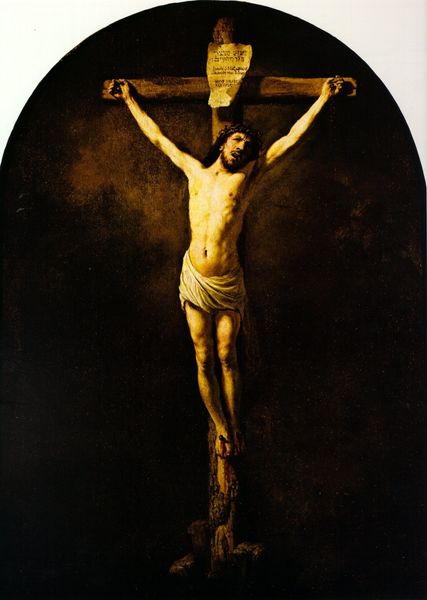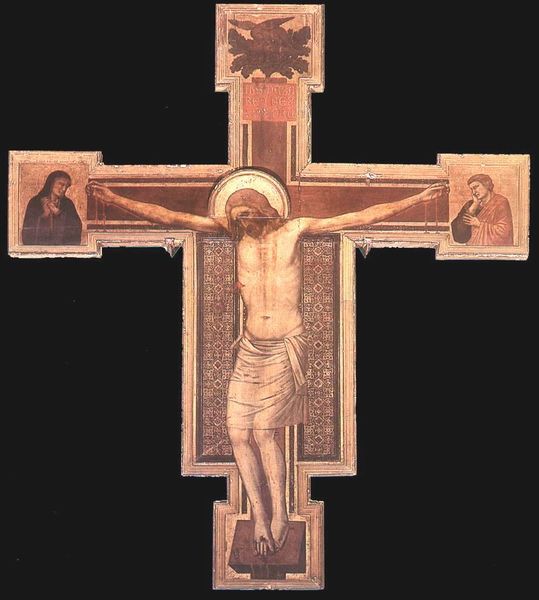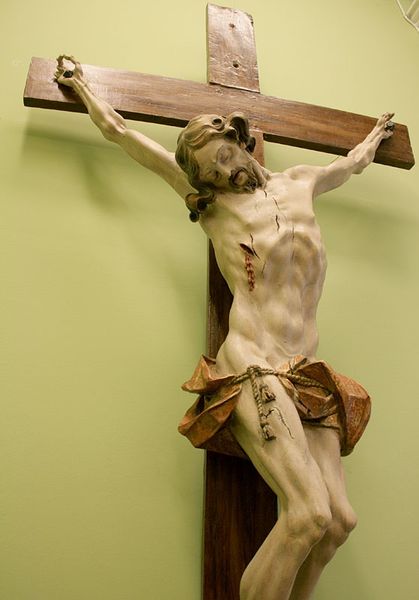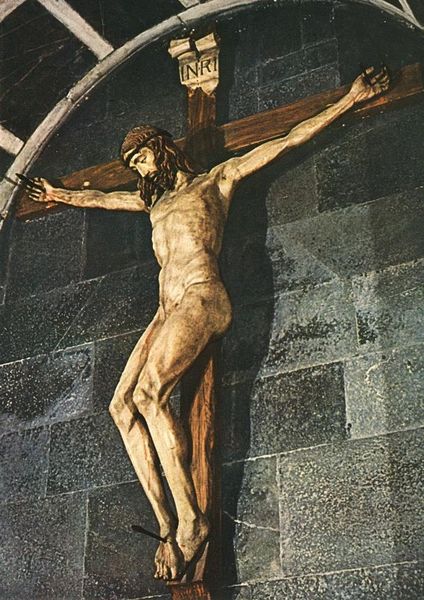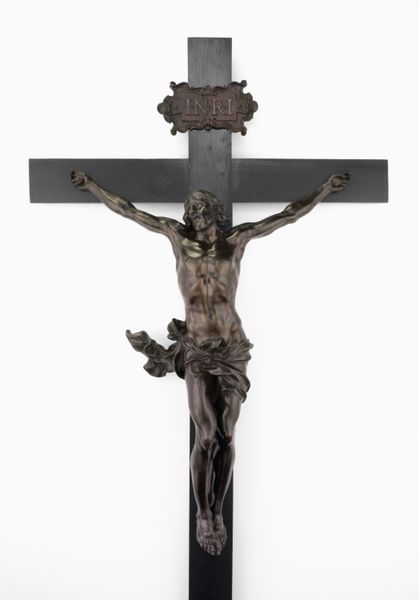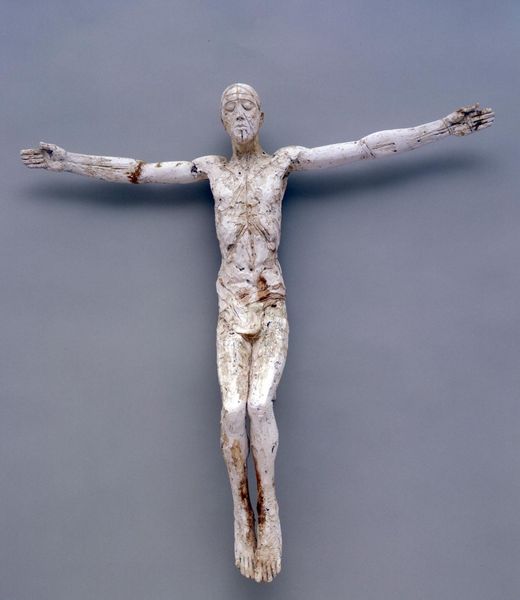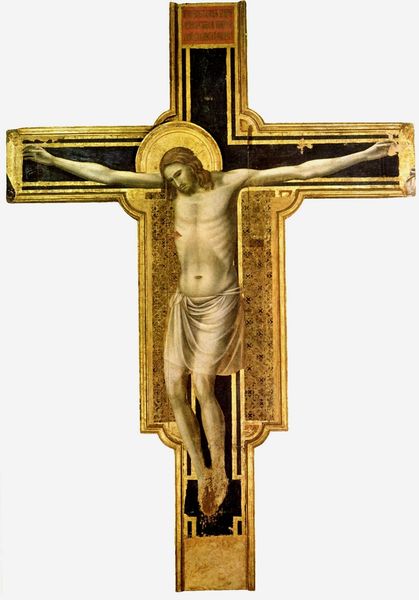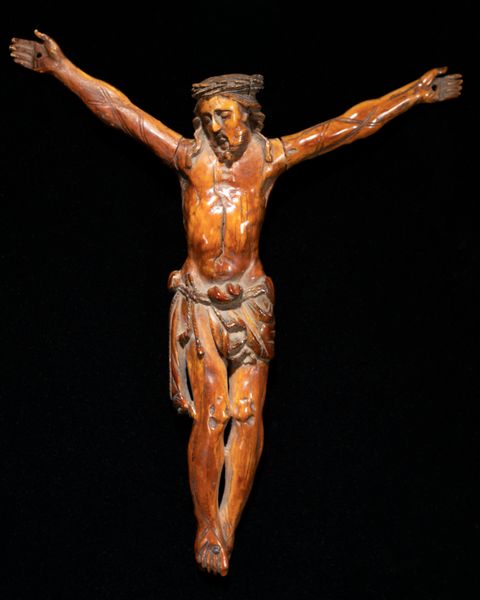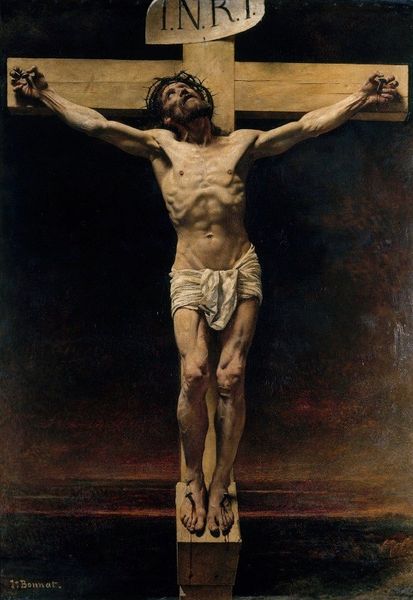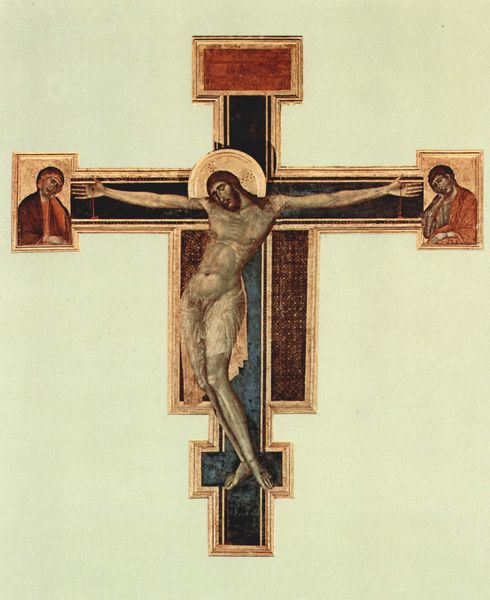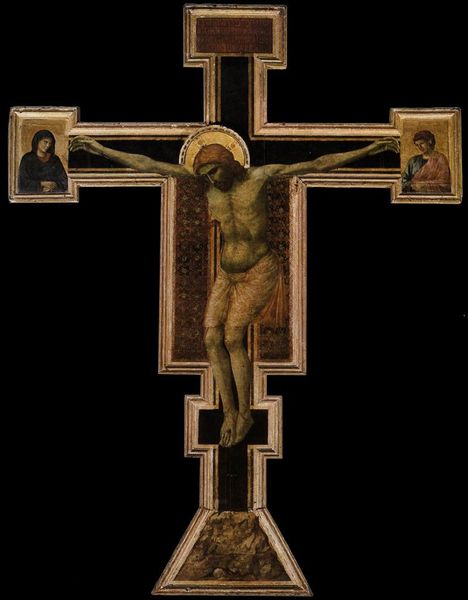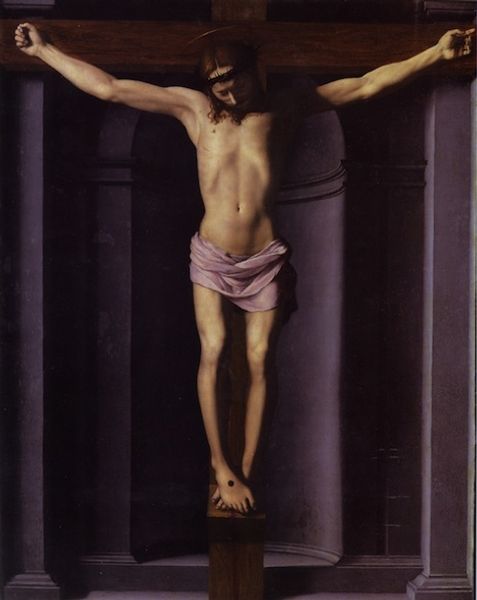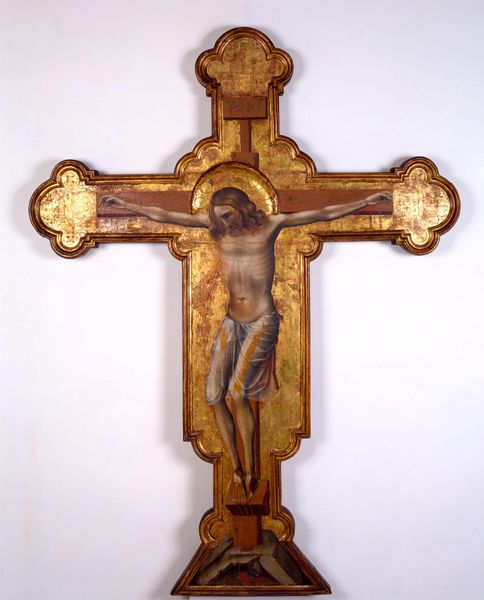
tempera, painting
#
medieval
#
tempera
#
painting
#
sculpture
#
sienese-school
#
figuration
#
romanesque
#
cross
#
history-painting
#
italian-renaissance
Copyright: Public domain
Curator: This is Pietro Lorenzetti’s "Shaped Cross," created around 1325. What are your initial thoughts? Editor: It's stark. The austerity hits you right away. Tempera on wood – the materiality adds to that rawness, doesn’t it? A cross isn't just an image; it's also constructed, fashioned. It emphasizes labor and production that transforms matter into symbol. Curator: Indeed, there's a tactile quality that heightens its spiritual weight. The very woodenness is essential, as if divinity is channeled through the humblest materials. It almost begs the question: What's more potent, the symbol or the physical presence of the artifact? Editor: I think they feed into each other here. Looking closely, I notice the paint. Notice how it's carefully applied, but thin, translucent? We get a sense of surface and process; we appreciate how pigment from minerals coats, alters the very grain and feel of the wood. A craft, a construction materializing the intangible. Curator: Absolutely. And Lorenzetti masterfully uses that tempera, that layering, to convey profound emotion. Christ’s body seems both fragile and luminous, caught between the earthly and the divine. The slumped figure, so vulnerable...almost collapsing. Did Lorenzetti see beyond symbol into a truly broken body? Editor: Maybe it also shows how the very nature of representation shifts. The skull at the base feels particularly stark, maybe even theatrical when placed against Christ on the Cross. How each medium transforms the subject based on use of materials: pigment and wood each representing the divine on its own material register. Curator: Right—there's an acknowledgment of our earthly limitations alongside our yearning for transcendence. Maybe it’s the skull that provides it…an awareness of mortality to appreciate transcendence. It also emphasizes that religious fervor isn’t separate from daily making of material culture; it intersects. Editor: In the end, though, its very crafted-ness, that tangible intersection of art and labor and faith…that endures. Curator: And stays with us. The simplicity is arresting…an expression of devotion embedded in form.
Comments
No comments
Be the first to comment and join the conversation on the ultimate creative platform.
